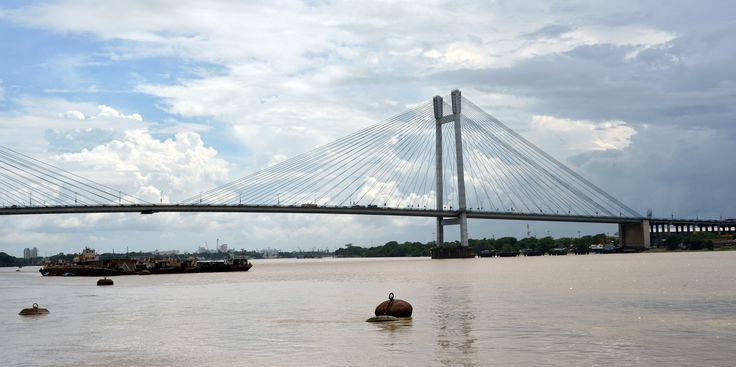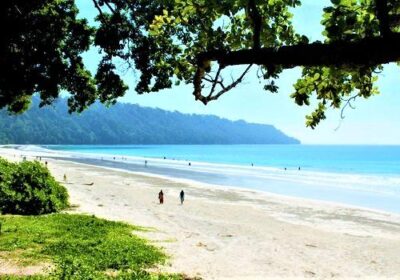Howrah Bridge: The Iconic Gateway to Kolkata
Howrah Bridge, also known as Rabindra Setu, is a legendary cantilever bridge spanning the Hooghly River in Kolkata, India. It stands as a remarkable engineering feat and a symbol of Kolkata’s rich cultural heritage. Connecting the twin cities of Howrah and Kolkata, the bridge is one of the busiest and most recognized landmarks in India.
kfq
Historical Significance
Constructed during the British colonial period, the idea for the Howrah Bridge dates back to 1862, but it was not until 1935 that the construction began. The bridge was completed in 1943, designed by the British company M/s Rendel, Palmer and Tritton and constructed by the Braithwaite, Burn & Jessop Construction Company. The bridge was originally named the New Howrah Bridge, but it was officially renamed Rabindra Setu in 1965, in honor of the renowned Bengali poet Rabindranath Tagore.
Architectural Marvel
- Cantilever Design: Howrah Bridge is a cantilever truss bridge, one of the largest of its kind in the world. It extends 705 meters (2,313 feet) in length with a central span of 457 meters (1,500 feet) between its two towers. The design does not use any nuts and bolts; instead, it is held together by riveting, which was a significant engineering accomplishment at the time.
- Construction Materials: The bridge is made of high-tensile steel, primarily supplied by Tata Steel. Approximately 26,500 tons of steel were used in its construction. The absence of pylons in the river was a notable feature, allowing unobstructed navigation for ships.
- Durability and Maintenance: Over the years, Howrah Bridge has withstood heavy traffic, natural calamities, and the test of time. Regular maintenance and structural assessments ensure its longevity, making it a vital lifeline for the city.
Functionality and Usage
Howrah Bridge is more than just a piece of infrastructure; it is a lifeline for Kolkata. Every day, it carries over 100,000 vehicles and more than 150,000 pedestrians, making it one of the busiest bridges in the world. It serves as a crucial connection for commuters traveling between Howrah and Kolkata, supporting the daily hustle and bustle of the metropolitan area.
Cultural Significance
- Symbol of Kolkata: The bridge is an iconic representation of Kolkata, often featured in films, literature, and art. It has become synonymous with the city’s identity, symbolizing its resilience and vibrancy.
- Photographic Attraction: Howrah Bridge is a favorite subject for photographers and tourists. Its majestic structure, especially when illuminated at night, offers breathtaking views and is a must-visit for anyone exploring Kolkata.
- Cinematic Presence: The bridge has appeared in numerous Bollywood films, adding to its fame and allure. Movies like “Howrah Bridge” (1958) and “Kahaani” (2012) have showcased this architectural marvel, cementing its place in popular culture.
Maintenance Challenges
Maintaining Howrah Bridge is a continuous challenge due to its age and the heavy load it bears daily. Issues like corrosion from pollution, vehicular emissions, and the saline environment of the Hooghly River require constant attention. Regular inspections, painting, and repair work are essential to preserve its structural integrity.
Howrah Bridge Today
Today, Howrah Bridge stands as a testament to India’s engineering prowess and historical legacy. It remains a vital artery for Kolkata, supporting its economic activities and daily life. The bridge continues to captivate locals and tourists alike with its grandeur and historical significance.
Tips for Visitors
- Best Views: To capture the best views of Howrah Bridge, visit the nearby Princep Ghat or take a ferry ride on the Hooghly River. Both locations offer stunning perspectives of the bridge.
- Time to Visit: The bridge is particularly beautiful at dawn and dusk when the lighting enhances its architectural features. Nighttime illumination also provides a spectacular sight.
- Cultural Spots: While visiting the bridge, explore nearby attractions such as the Howrah Railway Station, the oldest and largest railway complex in India, and the vibrant flower market at Mullick Ghat.
Conclusion
Howrah Bridge is not just an architectural marvel but also a living, breathing part of Kolkata’s heritage. It embodies the spirit of the city, bridging the old with the new and standing as a proud symbol of engineering excellence and cultural significance. Whether you’re a history buff, an architecture enthusiast, or a curious traveler, Howrah Bridge offers a fascinating glimpse into the heart of Kolkata.






Leave feedback about this